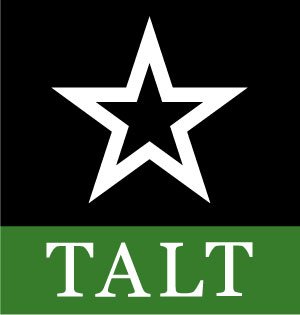Fall Creek Ranch
Joe and Karen Langdon are in the enviable position of living close to their children and five grandchildren. They all live on the family’s Fall Creek Ranch near Granbury in North Texas.
“Our kids have built-in babysitters, that’s for sure,” said Joe, with a laugh. “We sometimes take it for granted, but we know how fortunate it is to be in this situation and have our family so close,” added Karen.
The ranch has been in their family for more than five decades, and the elder Langdons live in the original ranch house that was built in 1882. Their children built houses on the ranch to accommodate their growing families. The Langdon’s oldest son, Kit, and his wife Brianne are teachers in Granbury. The younger son, Kelly works for his parents and helps them manage the ranch with help from his wife, Kristyn. Kelly and Kristyn manage a wedding venue there, too. The ranch also supports cattle production and grazing, along with a hunting operation.
In recent years, the family has watched with some trepidation as the population of Granbury and Hood County has exploded. According to Texas Land Trends data from Texas A&M’s Natural Resource Institute, the population of Hood County has grown by 70 percent since 1997, and land values have skyrocketed, with attendant increases in property taxes and other expenses. Anyone who lives in or has visited Granbury in recent years has certainly noticed the astonishing increase in traffic.
“Astonishing is a polite word for it, in my view,” said Joe. “I’ve been around Granbury since the early 1950s, and I remember when there was just one stoplight and you couldn’t find a restaurant open on a Monday night.”
As the population has grown and land values have increased, the Langdons have seen subdivisions spring up where there were once pastures, and more of their neighbors selling their property to developers, especially as land changes hands from one generation to the next.
The search for more revenue streams to support their ranch is how the Langdon family ended up in the wedding venue business.
“It was kind of happenstance,” said Kelly. “My cousin got married here about five years ago, and we cleaned out a barn to accommodate the wedding guests, more than 200 people from Houston. They absolutely raved about it, and that got the wheels turning on creating a venue.”
They enclosed the barn, constructed a chapel and other facilities, built a website and began booking weddings and other special events. Business has been brisk, though COVID slowed things down a bit in 2020 and 2021.
Over the last couple of years, Karen and Joe have been contemplating how they could protect the land in the years to come.
“We absolutely love this land, and we never want to see it developed,” said Karen. “We began exploring the idea of a conservation easement.”
Joe and Karen witnessed firsthand what happens to family land when an elder passes on without making plans. Karen’s brother in Colorado married into a family that worked land near Fort Collins for generations. Many family members thought that plans had been made to keep the ranch intact.
“After he was gone, they found out that he had not done that, and the land was divided up among many grandchildren and cousins, most who were not connected to the land anymore,” said Joe. “Much of the original ranch was recently sold. It was such a shame to see because there was so much history there.”
As Joe and Karen explored whether a conservation easement might work for their family, they learned about the Texas Agricultural Land Trust (TALT). Joe and Karen are also members of the Texas and Southwestern Cattle Raisers Association, the Texas Wildlife Association, and the Texas Farm Bureau, which are the three organizations that came together to found TALT back in 2007. They invited TALT’s Executive Director Chad Ellis out for a visit, and that sealed the deal.
“We’ve had a wonderful experience with TALT’s staff, from the very beginning,” said Joe. “They worked with us to be sure our needs would be met, and they were all so professional. It just gives us a feeling of confidence that they will be around for a long, long time.”
The conservation easement held by TALT will forever protect 1,275 acres in Hood and Johnson counties in the Brazos River watershed. Fall Creek runs through the property with a waterfall area, which feeds the Brazos River downstream. The wetlands there provides habitat for a multitude of flora and fauna. The property has a high conservation value thanks to the multiple water features, regenerative grazing practices and management, and high-quality wildlife habitat.
For Joe and Karen, the transaction eases their minds about what might happen long after they are gone.




